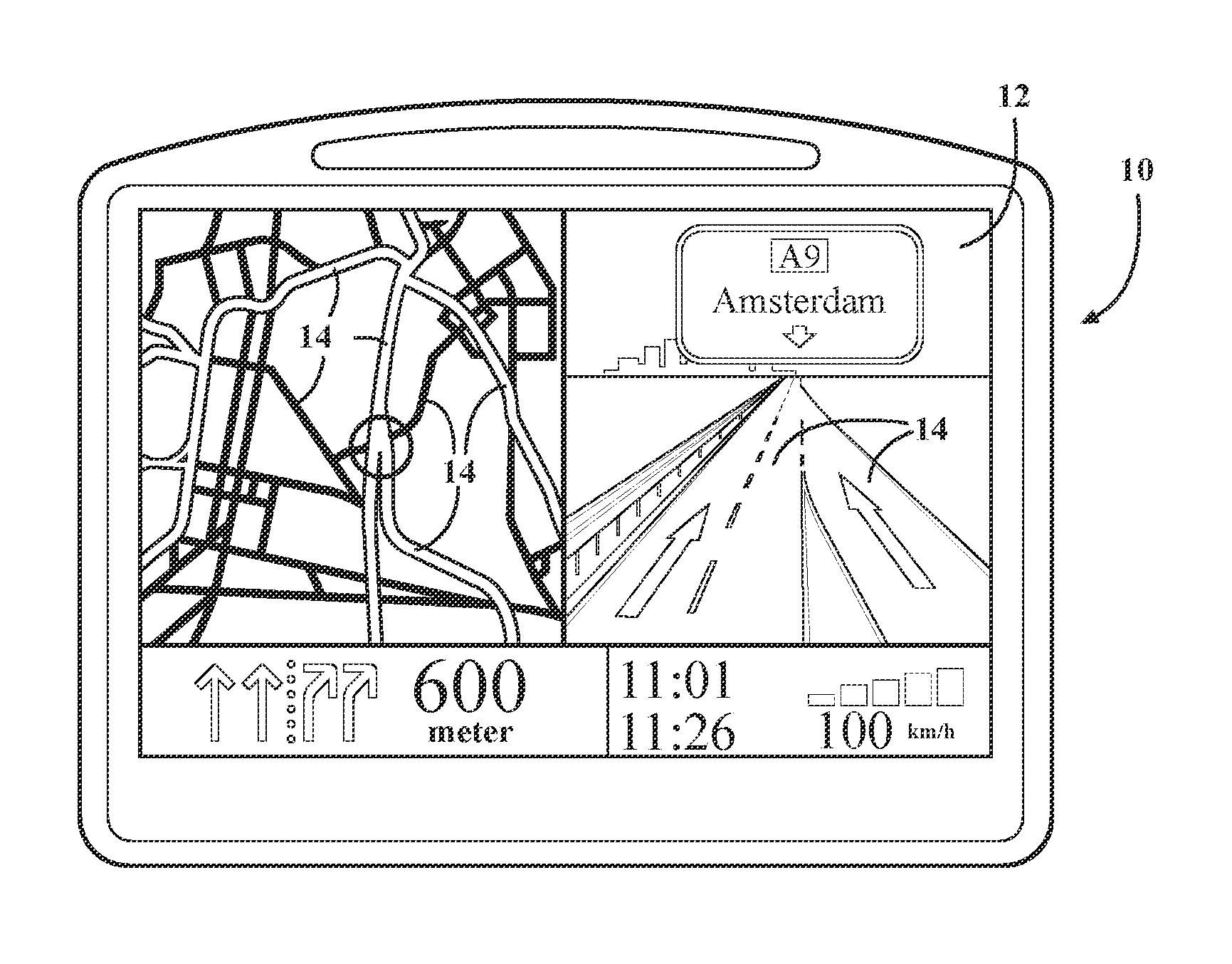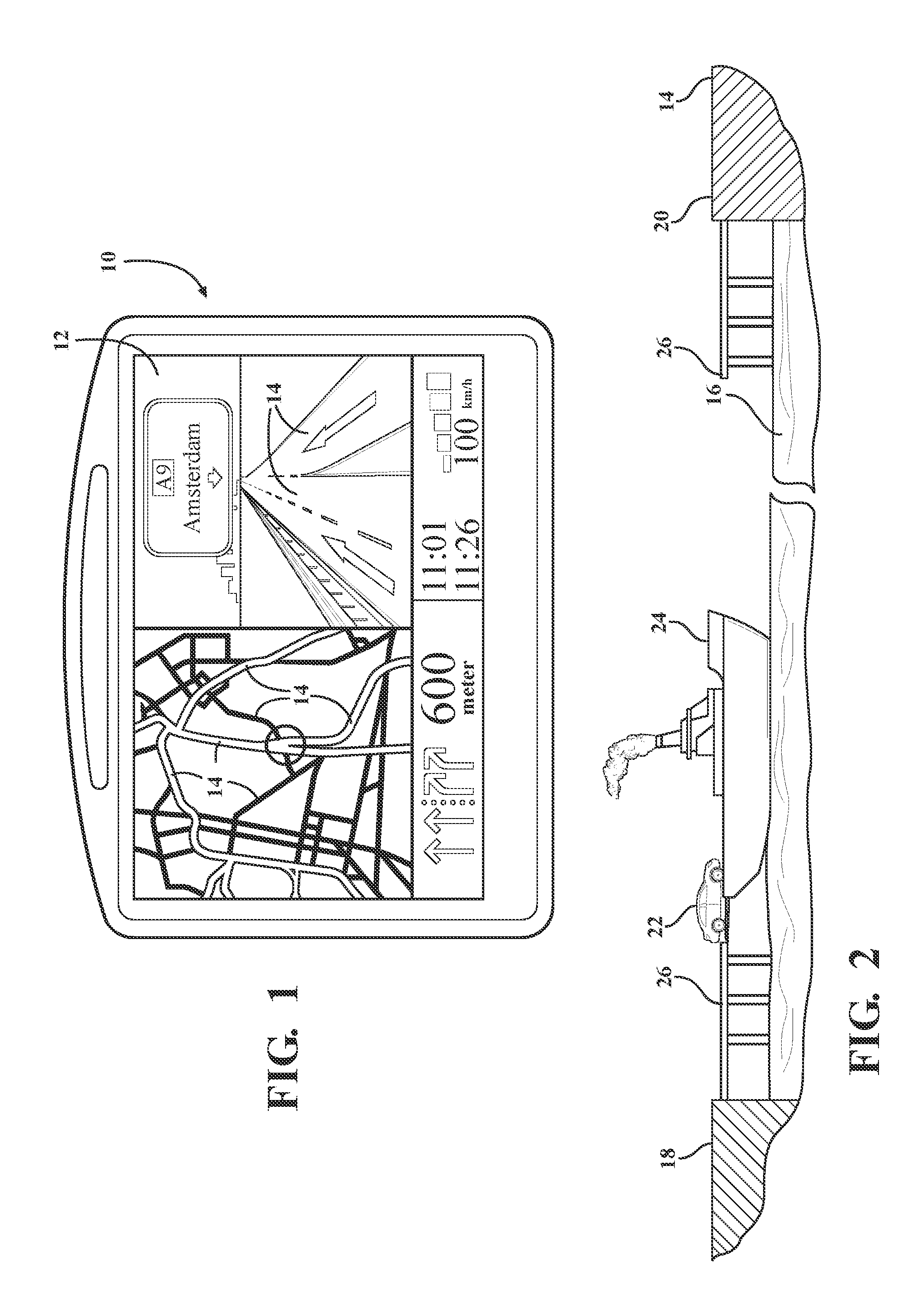Detecting location, timetable and travel time estimations for barrier crossings in a digital map
- Summary
- Abstract
- Description
- Claims
- Application Information
AI Technical Summary
Benefits of technology
Problems solved by technology
Method used
Image
Examples
Embodiment Construction
[0027]Referring to the figures wherein like numerals indicate like or corresponding parts throughout the several views, this invention pertains to digital maps as used by navigation systems, as well as other map applications which may include those viewable through internet enabled computers, personal digital assistants (PDAs), cellular phones, portable navigation devices, in-dash car mounted navigation systems, and the like.
[0028]FIG. 2 depicts, in highly simplified form, a water barrier in the form of a river, lake or sea 16. This water barrier 16 is merely an example of one type of traffic barrier; non-water type barriers are also contemplated within the broad definition of barrier and may include valleys, railroad crossings, construction / repair projects, and other features which periodically impede or restrict the free flow of motor vehicles or other convoyed objects along a roadway or other traveled path. First 18 and second 20 road segments comprise those portions of an overal...
PUM
 Login to view more
Login to view more Abstract
Description
Claims
Application Information
 Login to view more
Login to view more - R&D Engineer
- R&D Manager
- IP Professional
- Industry Leading Data Capabilities
- Powerful AI technology
- Patent DNA Extraction
Browse by: Latest US Patents, China's latest patents, Technical Efficacy Thesaurus, Application Domain, Technology Topic.
© 2024 PatSnap. All rights reserved.Legal|Privacy policy|Modern Slavery Act Transparency Statement|Sitemap



